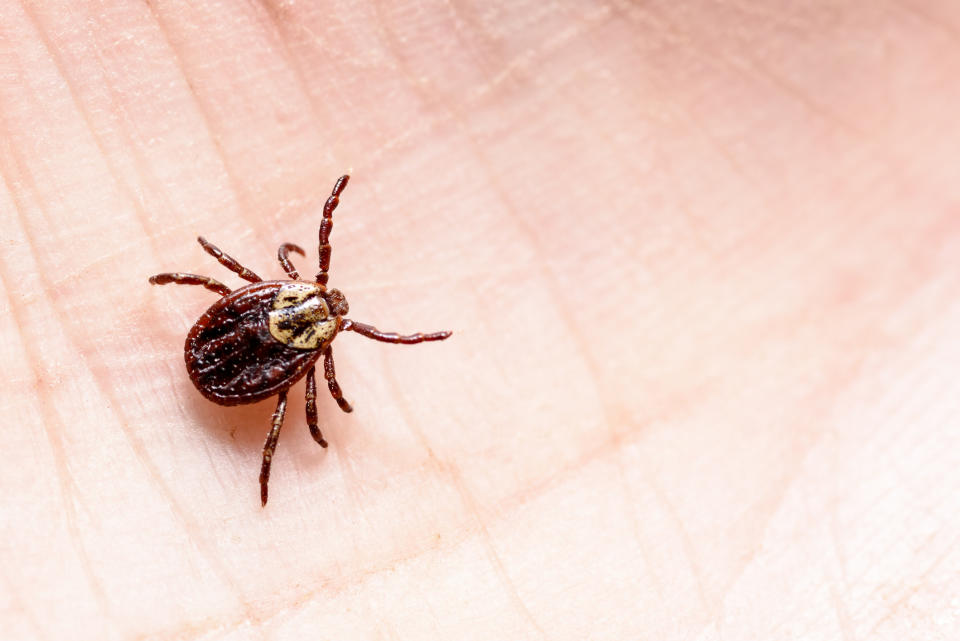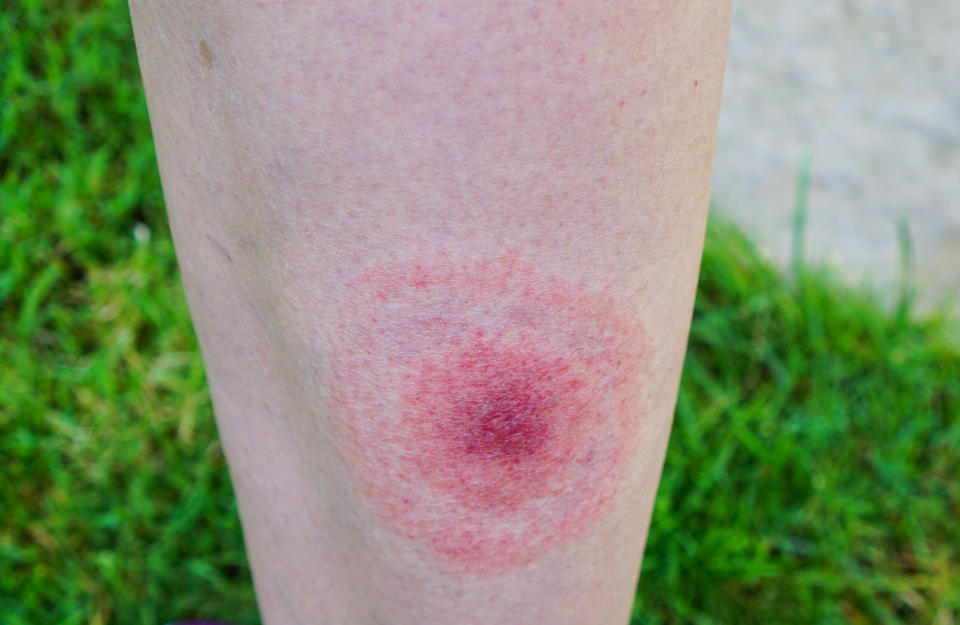Lyme disease signs and symptoms as Bella Hadid reflects on 15 years of 'invisible suffering'
Bella Hadid has reflected on what it's been like living with Lyme disease for the past 15 years.
In a post to Instagram, the 26-year-old model said that she is "finally healthy" after over a decade of battling the disease that can affect the joints, heart and nervous system.
"Living in this state, worsening with time and work while trying to make myself, my family and the people who support me, proud, had taken a toll on me in ways I can’t really explain," she wrote.
"To be that sad and sick with the most blessings/privilege/opportunity/love around me was quite possibly the most confusing thing ever.
"Almost 15 years of invisible suffering, was all worth it if I’m able to, God willing, have a lifetime of spreading love from a full cup, and being able to truly be myself, for the first time ever," she added.
It's not the first time Hadid has opened up about living with the condition as she has previously detailed her flare ups - but what is the condition?
Lyme disease is spread by bites from infected ticks, which can be carried by animals. As ticks are cases in the UK have been on the rise in recent years, we need to be more 'tick-aware'.
It's thought we're seeing an increase in ticks in the UK due to climate change, with them thriving in warmer and humid conditions, among other factors.
Ticks can also carry other diseases, like encephalitis, which affects the brain and can be life-threatening.
The number of those infected with Lyme disease in England each year is estimated at around 3,000. But what exactly is it and what are the symptoms to look out for?
What is Lyme disease?
According to the NHS, Lyme disease is a bacterial infection that can be spread to humans by infected ticks.
"Lyme borreliosis (most commonly known as Lyme disease) is a bacterial infection that’s spread through tick bites," explains Dr Diana Gall from Doctor4U. "If you’re bitten by an infected tick, the bacteria can spread into your blood, meaning that you’re at risk of developing Lyme disease, but not all ticks carry the bacteria, so treatment isn’t always necessary, even if you’ve been bitten."
Ticks are generally found in forests, woodlands and grassy areas, but they can also be found in gardens and parks.
"It’s important to know the signs and symptoms of Lyme disease so that you can find the right treatment as soon as possible," she adds.
Read more: A tick lodged in man’s eye and had to be pried off - Yahoo Life UK, 4-min read
What are the symptoms of Lyme disease?
Dr Gall says one of the main symptoms of early Lyme disease is a circular red skin rash around a tick bite.
"The infection is often characterised by a circular red rash that usually forms the shape of a bullseye on a dartboard, which appears within one to four weeks of the bite," she explains.
However, not everyone that’s infected with Lyme disease will develop a rash.
"Sometimes, the only telling factors of Lyme disease are flu-like symptoms such as a high temperature, headaches, muscle and joint pain, and fatigue," Dr Gall adds.

What do you do if you think you’ve been bitten by a tick?
Because tick bites are not usually painful some people may be unaware that they have even been bitten, LloydsPharmacy’s Matt Courtney Smith points out.
"But they can cause swelling, itchiness and bruising, and appear as a small red lump on the skin," he explains.
"Ticks often remain attached to the skin and should be removed carefully with a pair of fine-tipped tweezers. Grip the tick as close to the skin as possible and pull steadily away from the skin," Courtney Smith explains.
"The area should then be washed with soap and water and an antiseptic cream applied to the skin around the bite to reduce itching."

If the infection is untreated, it can progress into a more severe form of Lyme disease, where symptoms such as swollen joints, nerve issues, heart problems and difficulties with memory and concentration have been reported.
"If you suspect that you might have Lyme disease, you should make an appointment with your doctor who’ll send you for a diagnostic blood test," Dr Gall advises.
Read more: What is syphilis and why are cases on the rise? - Yahoo Life UK, 4-min read
How is lyme disease treated?
Thankfully, Lyme disease is a treatable condition, with diagnosed patients being given a two to four week course of antibiotics to kill the bacteria.
"In rare cases, some people might still display symptoms for a long time after they’ve been treated, but a vast majority will recover quickly," Dr Gall explains.
How do you stop yourself getting a tick on holiday?
It isn’t just in the UK that you need to be tick-aware, as the bugs are found across the globe, so is something you should keep in mind if you head somewhere hot on holiday this year.
To reduce the risk of getting bitten by a tick, Dr Gall recommends covering as much of your skin as possible, as it’s harder for the ticks to bite through material.
"Other preventative measures you can take include wearing insect repellent, avoiding walking through grassy areas, and wearing light coloured clothing so it’s easier to spot ticks," Dr Gall adds.
She also recommends checking your skin (and your pets if you have any) after being outdoors.
"You should also pay attention to your scalp and any skin folds, as ticks may be hiding in these areas," she adds.
Watch: Bella Hadid says Lyme disease makes her profession 'hard'



